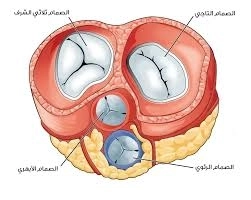
Heart Valve Replacement: Types and Surgical Steps
Published on: 2025-06-25 | Written by: Prof. Dr. Ahmed Fahmy Al-Wateedi, Senior Consultant and Associate- -
Professor Dr. Ahmed Fahmy El-Weteidy, Senior Consultant of Cardiac Surgery, is one of the leading specialists in adult heart valve replacement surgeries, utilizing the latest surgical techniques to ensure maximum safety and effectiveness. In this article, we explore the different types of heart valves available and the detailed steps of the surgical procedure, along with key considerations every patient should know.
What Are Heart Valves, and Why Might They Need Replacing?
Heart valves regulate blood flow between the chambers of the heart. When a valve becomes narrowed, leaky, or damaged, the heart's function can be severely affected.
According to Dr. Ahmed Fahmy El-Weteidy, valve replacement becomes necessary in cases such as:
-
Mitral or aortic valve stenosis
-
Tricuspid or pulmonary valve regurgitation
-
Valve damage due to rheumatic fever or infection
-
Failed prior valve repair procedures
Types of Heart Valves Used in Surgery
-
Mechanical Valves:
Made from synthetic materials and known for their durability.
Dr. Ahmed Fahmy El-Weteidy recommends these for younger patients who can commit to lifelong anticoagulant therapy. -
Biological Valves:
Made from animal tissues (usually pig or cow) and ideal for patients who cannot take blood thinners long-term.
They are often chosen for elderly patients or those with bleeding disorders.
Steps of the Valve Replacement Surgery
Based on Dr. Ahmed Fahmy El-Weteidy’s clinical experience, the surgery involves several precise steps:
-
General anesthesia and preparation for surgery
-
A median sternotomy (chest opening) or minimally invasive technique
-
Connection to a heart-lung bypass machine
-
Careful removal of the damaged valve
-
Implantation of the new valve (mechanical or biological)
-
Restarting the heart and closing the chest
The surgery usually takes 3 to 5 hours, followed by 1–2 days in the ICU.
Post-Operative Care
Following surgery, Dr. Ahmed Fahmy El-Weteidy provides patients with a comprehensive recovery program that includes:
-
Regular monitoring to assess the new valve’s function
-
Medications such as anticoagulants if needed
-
A rehabilitation plan covering diet, mobility, and control of blood pressure and diabetes
Dr. Ahmed Fahmy El-Weteidy’s Advice for Patients:
-
Don’t delay surgery if symptoms like shortness of breath or chest pain appear
-
Consult your doctor early if you have a family history or past valve disease
-
Choose the valve type that best suits your health condition—don’t hesitate to ask about your options
-
Commit to long-term follow-up to avoid complications

